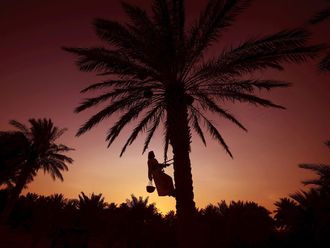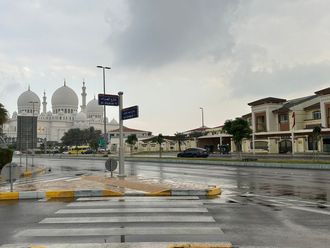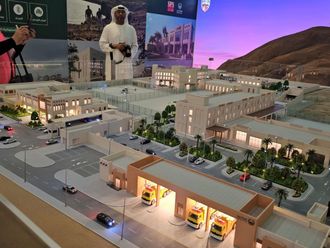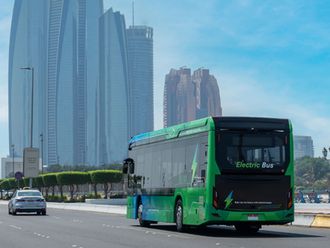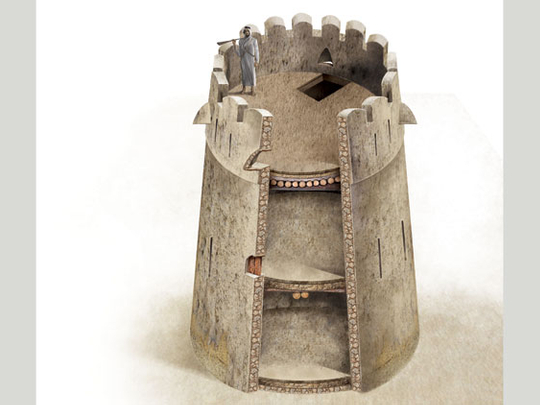
Abu Dhabi: For more than 250 years, a gleaming white tower has stood guard in the heart of Abu Dhabi.
To protect its people, a robust fort developed around it. Soon, with Abu Dhabi’s founding generations living within, a thriving city sprung up in the vicinity.
This is the Qasr Al Hosn, also popularly known as the “White Fort”. Beloved by its people, Qasr Al Hosn today symbolises the evolution of a civilisation, both through its architecture and the significant happenings that it has witnessed.
“Qasr Al Hosn is the physical embodiment of the story of Abu Dhabi because the evolution of the building parallels the development of its people,” Mark Powell Kyffin, an architect at the Abu Dhabi Tourism and Culture Authority (TCA Abu Dhabi), told Gulf News. Kyffin is currently involved in the TCA Abu Dhabi’s restoration of Qasr Al Hosn.
According to the TCA Abu Dhabi, the fort was enlarged, repaired and fortified during the rules of Shaikh Tahnoun Bin Shakhbout (1818-33) and Shaikh Khalifa Bin Shakhbout (1833-45).
As Abu Dhabi grew politically and economically during the reigns of Shaikh Saeed Bin Tahnoun (1845-1855) and Shaikh Zayed Bin Khalifa (1855-1909), or Zayed the Great, Qasr Al Hosn became the seat of power.
During this time, Zayed the Great created a plinth or step outside the northwest square tower of the fort to serve as a majlis. Previously, people had to wait outside the fort, and were called in to meet the ruler.
“This is quite a significant moment in the history of Abu Dhabi. It clearly shows that the ruler is a man of the people,” Kyffin explained.
Following the discovery of oil in Abu Dhabi , Shaikh Shakhbout Bin Sultan (1928-66) ordered the improvement and extension of the fort, therefore creating work for thousands of local people.
“At this point, the fort was converted into a palace, marking a big step in its evolution. This stage began in 1939 and finished some time between 1943 and 1945,” Kyffin said.
Once these works were completed, the original towers were enclosed within an imposing palace.
There were two main entrances to the new palace — one in the north façade for men and the other in the south for women.
“Many young shaikhs and shaikhas are believed to have played in the protected green spaces inside the fort and palace,” Kyffin said.
The architect explained that although Qasr Al Hosn was made of lightish sandy brown materials, the inclusion of crushed sea shells in the mortar caused it to sparkle from a distance.
“This is what originally led to it being called ‘The White Fort’. In the late 1950 and early 1960s, a white limewash was used to paint it, which further accentuated this name,” he added.
One of the watchtowers was also historically used to call for prayer as the fort was orientated towards Makkah.
After the formation of the UAE, Qasr Al Hosn ceased to be used as a palace due to the development of taller buildings around it which compromised its safety and privacy.
So, in the 1980s, the UAE’s founding father Shaikh Zayed Bin Sultan Al Nahyan (1966-2004) ordered the structure to be converted into a centre for documentation and research. Later on, a building known as the Cultural Foundation was built nearby to house exhibitions and cultural events for the residents of Abu Dhabi.
“It is unique to have a tower that is recognisable as being the start of a nation. Qasr Al Hosn is this building for the UAE, and everything seems to stem from it,” Kyffin added.
BOX/SIDEBAR
According to historians, the Bani Yas tribes first discovered water in the area in the 18th century. As the legend goes, an Arabian oryx scraped the ground, uncovering potable fresh water supplies near the coast. Under the orders of Shaikh Diab Bin Eisa, the tribe’s leader, the first watchtower was constructed around 1761 to safeguard the water source.
Soon after, oral histories say that another round tower was built diagonally opposite, and both were connected by walls to form an enclosure.
“In the northwest corner, a ‘murabba’ or square tower was built to overlook the entrance to the fortress. So the fort was basically covered in terms of security in all aspects, both from the coast and the mainland,” Kyffin said.



